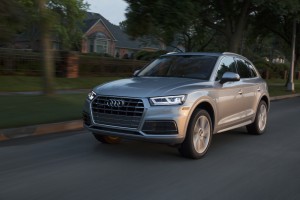New vehicle sales stalled in February as General Motors, Ford Motor Co., Fiat Chrysler Automobiles N.V. and Nissan all reported sales declines, but Toyota and Volkswagen managed to post increases taking some of the sting out of figures.
Volkswagen said its sales increased by 6% while Toyota posted an increase of 4.5%. “We’re off to an outstanding start for the year,” said Jack Hollis, the head of the Toyota Division sales. Not surprisingly, Audi also continued its run of positive months with a 12% February jump.
“Market softness spread beyond cars in February to other segments of the market,” said Michelle Krebs, executive analyst, AutoTrader.com.
“Trucks did not have a spectacular month, despite some hefty incentives, and utility performance varied by brand. Still, January and February are low sales months. March and April will truly indicate whether vehicle sales are ready to come out of hibernation.”
(New vehicle sales expected to drop in February. Click Here for the story.)
GM, meanwhile, said its sales declined by 6.9% despite a 7% increase in fleet sales, driven by a 15% increase in commercial deliveries.
Calendar year to date, commercial deliveries are up 33%, due to a combination of strong products, business confidence and tax reform. Much of the gain was in full-size pickup trucks, underscoring the strength of the U.S. economy. Small business deliveries also helped drive sharply higher sales of large vans, which GM noted indicates the economy still has a great deal of strength.
“Consumer confidence is at its highest level since 2000, the economy is strong, our newest products are selling very well, and we have successfully managed the transition to the 2018 model year far better than most of our competitors,” said Kurt McNeil, U.S. vice president, Sales Operations. “Customer demand, GM’s new products and upcoming launches are in perfect tune.”
GM also said it had reduced its incentive spending during February despite pressure from Japanese rivals, which evidence suggest have increased spending on various kinds of incentives.
Ford also reported a 6.9% decline in sales during February, but company executives remained upbeat. “Our higher trim level vehicles are really resonating with our customers, who are looking for more content and technology than ever before. This is especially true of our trucks and SUVs,” noted Mark LaNeve, Ford vice president of sales, services and marketing.
(Click Here for details about new vehicle sales holding steady in January.)
“The new Ford Expedition and Lincoln Navigator are moving fast, as we work to increase our output to keep up with our customers’ passion for these two vehicles,” he said.
FCA reported that sales declined by 1% but the Jeep brand, which is now launching new products, saw sales increase by 12% last month helping to keep that decline to a minimum.
The aforementioned Nissan saw sales fall 4.3% for its North American group. Nissan Division fell 4% while its luxury group, Infiniti, dropped 6.7%. Another Japanese maker, Honda, reported an overall drop of 5%, which was led by Honda Division dropping 5.6% while, surprisingly, Acura rose slightly by 1%.
The two biggest luxury brands, BMW and Mercedes-Benz, reported increases last month of 4.2% and 1% respectively.
Charlie Chesborough, senior economist at Cox Automotive, noted that market conditions have changed substantially since the record of 2016.
“Gasoline prices reached their post-recession low in February 2016 and are now 43% higher. The Federal Reserve has increased the federal funds rate by 100 basis points since February 2016, driving auto loan rates back up, to level not seen since 2013.
(To see more about global auto sales hitting a record this year, Click Here.)
“Still, despite stock market volatility, consumer confidence remains high and a strong economy is still supporting vehicle sales. Softness in February sales was expected, as some correction to a below-17 million SAAR was inevitable and should not be taken as an indication of an overall weak market. We continue to expect marginal declines in new vehicle sales compared to 2017, as payment affordability pushes many consumers to consider pre-owned vehicles,” he noted.



Great article Michelle!
Michelle?